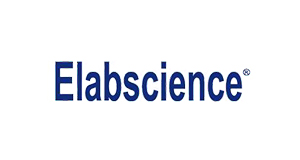Recombinant Human CHGA protein (His tag)
Recombinant Human CHGA protein (His tag)
SKU
ELSPDMH100095-20
Packaging Unit
20 µg
Manufacturer
Elabscience Biotechnology
Availability:
loading...
Price is loading...
Abbreviation: CHGA
Target Synonym: Chromogranin-A;CgA;Pituitary secretory protein I;SP-I;CHGA
Target Species: Human
Expression Host: HEK293 Cells
Fusion Tag: C-His
UNIProt ID: P10645
Background: Chromogranin A (CgA), also known as pituitary secretory protein I (SP-I), is a member of the granin family of regulated secretory proteins. CgA shares several protein characteristics common to the granin family: acidic isoelectric point, the capacity to bind calcium ions, the ability to form aggregates and multiple dibasic cleavage sites. Mature human CgA is 439 amino acids (aa) and contains 10 dibasic, proteolytic cleavage sites, capable of yielding several smaller peptides, each displaying a unique function. Mature human CgA shares 63% aa sequence identity with mouse and rat CgA. CgA is expressed exclusively in the secretory dense core granules of most normal and neoplastic neuroendocrine cells. Increased levels of CgA have been detected inpatients with neuroendocrine tumors as well as non-neuroendocrine tumors, hence CgA is an important serological marker for tumor diagnosis and monitoring tumorprogression/regression. It has been demonstrated in mouse model that full-length CgA containing its C-terminal region can impair angiogenesis and tumor growth. In addition, CgA can bind to Secretogranin III to regulate the biogenesis of secretory granules.
Sequence: Met1-Gly457
Purity: > 95 % as determined by reducing SDS-PAGE.
Formulation: Lyophilized from sterile PBS, pH 7.4.
Normally 5 % - 8 % trehalose, mannitol and 0.01% Tween80 are added as protectants before lyophilization.
Please refer to the specific buffer information in the printed manual.
Endotoxin: Please contact us for more information.
Target Synonym: Chromogranin-A;CgA;Pituitary secretory protein I;SP-I;CHGA
Target Species: Human
Expression Host: HEK293 Cells
Fusion Tag: C-His
UNIProt ID: P10645
Background: Chromogranin A (CgA), also known as pituitary secretory protein I (SP-I), is a member of the granin family of regulated secretory proteins. CgA shares several protein characteristics common to the granin family: acidic isoelectric point, the capacity to bind calcium ions, the ability to form aggregates and multiple dibasic cleavage sites. Mature human CgA is 439 amino acids (aa) and contains 10 dibasic, proteolytic cleavage sites, capable of yielding several smaller peptides, each displaying a unique function. Mature human CgA shares 63% aa sequence identity with mouse and rat CgA. CgA is expressed exclusively in the secretory dense core granules of most normal and neoplastic neuroendocrine cells. Increased levels of CgA have been detected inpatients with neuroendocrine tumors as well as non-neuroendocrine tumors, hence CgA is an important serological marker for tumor diagnosis and monitoring tumorprogression/regression. It has been demonstrated in mouse model that full-length CgA containing its C-terminal region can impair angiogenesis and tumor growth. In addition, CgA can bind to Secretogranin III to regulate the biogenesis of secretory granules.
Sequence: Met1-Gly457
Purity: > 95 % as determined by reducing SDS-PAGE.
Formulation: Lyophilized from sterile PBS, pH 7.4.
Normally 5 % - 8 % trehalose, mannitol and 0.01% Tween80 are added as protectants before lyophilization.
Please refer to the specific buffer information in the printed manual.
Endotoxin: Please contact us for more information.

 Deutsch
Deutsch










